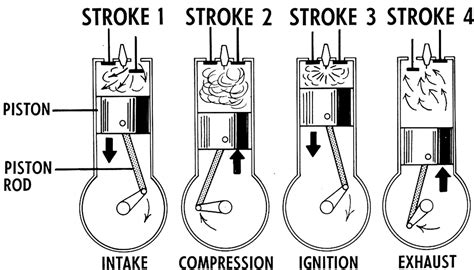How Do You Stop A Runaway Diesel
Ronan Farrow
Apr 04, 2025 · 2 min read

Table of Contents
How to Stop a Runaway Diesel: A Comprehensive Guide
A runaway diesel is a terrifying scenario, but understanding the potential causes and emergency procedures can significantly increase your chances of a safe outcome. This comprehensive guide will equip you with the knowledge to handle such a situation effectively.
Understanding Runaway Diesels
A runaway diesel occurs when the engine continues to run at high speed, even when the ignition is switched off. This is usually caused by a fuel system malfunction, where excessive fuel enters the engine's cylinders, causing uncontrolled combustion.
Common Causes:
- Fuel injection pump failure: A malfunctioning fuel injection pump can continuously supply fuel, even without throttle input.
- Governor malfunction: The governor regulates engine speed. A failure here can prevent the engine from responding to the throttle.
- Vacuum leak in the fuel system: A significant vacuum leak can pull fuel into the engine, overriding normal control mechanisms.
- Stuck throttle: A jammed or stuck accelerator pedal can maintain a high fuel supply.
- Excessive fuel pressure: High fuel pressure can overwhelm the engine's control systems.
Emergency Procedures:
The key is swift, decisive action. Remember, your safety and the safety of others is paramount.
Immediate Actions:
- Try to shut off the engine: Attempt to turn the ignition key to the "off" position. Though unlikely to work in a true runaway situation, it's the first step.
- Disengage the clutch (manual transmission): In vehicles with manual transmissions, pressing the clutch pedal will disengage the engine from the wheels, stopping the vehicle's forward motion. This is crucial in preventing an accident.
- Shift to neutral (automatic transmission): For automatic transmissions, shifting to neutral will disconnect the engine from the drive train, slowing the vehicle.
Advanced Procedures (If the above fail):
- Deprive the engine of air: Carefully and slowly introduce a fire extinguisher or a blanket into the air intake to restrict the engine's access to oxygen. Caution: This is a risky maneuver and should only be attempted as a last resort. Improper execution can lead to serious damage.
- Deprive the engine of fuel: If accessible and safe, try to quickly interrupt the fuel line. Warning: This is extremely dangerous and should only be attempted by trained professionals familiar with fuel system mechanics.
- Use the engine brake: In vehicles equipped with an engine brake, activating it can help slow the engine's RPMs.
Prevention is Key:
Regular maintenance is critical to minimize the risk of a runaway diesel. This includes:
- Scheduled maintenance: Follow the manufacturer's recommended service schedule meticulously.
- Inspect fuel lines and pumps: Regularly check for leaks, cracks, or other damage in the fuel system.
- Governor maintenance: Ensure the engine governor is functioning correctly.
Conclusion:
A runaway diesel is a serious event, demanding quick thinking and decisive action. Understanding the potential causes and following the emergency procedures outlined above can dramatically improve your chances of a safe outcome. Remember, prevention through regular maintenance is the best strategy. Always prioritize safety.
Featured Posts
Also read the following articles
| Article Title | Date |
|---|---|
| How Fast Can You Drive In Low Gear | Apr 04, 2025 |
| How Do I Stud My Dog Out | Apr 04, 2025 |
| How Hard Is It To Catch A Bluefin Tuna | Apr 04, 2025 |
| How Do You Cash Out On Juwa App | Apr 04, 2025 |
| How Do We Use A Concrete Float In Agriculture | Apr 04, 2025 |
Latest Posts
Thank you for visiting our website which covers about How Do You Stop A Runaway Diesel . We hope the information provided has been useful to you. Feel free to contact us if you have any questions or need further assistance. See you next time and don't miss to bookmark.
